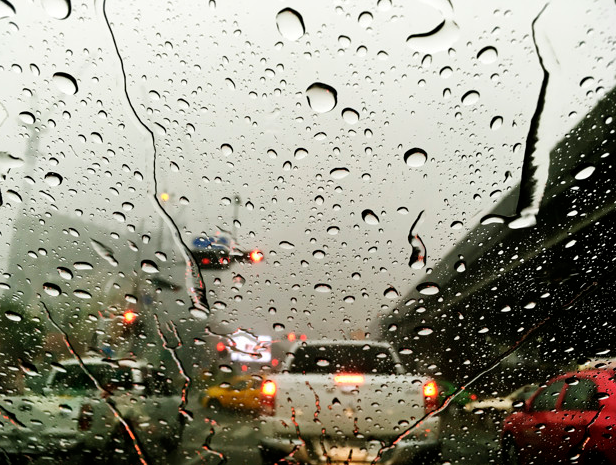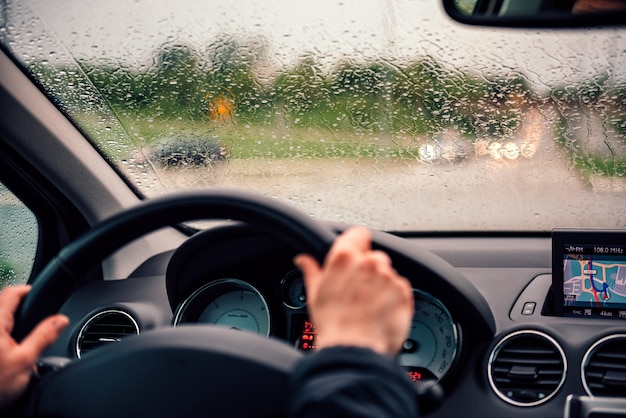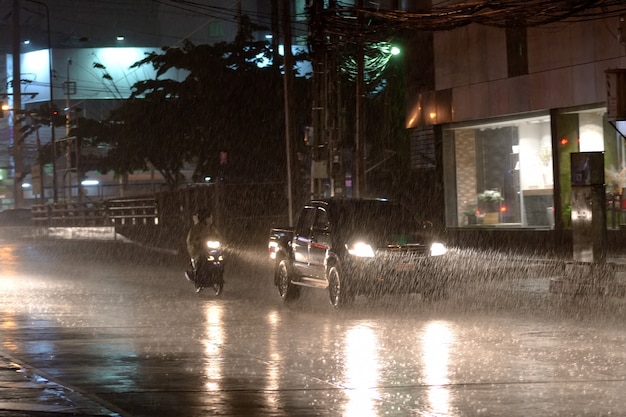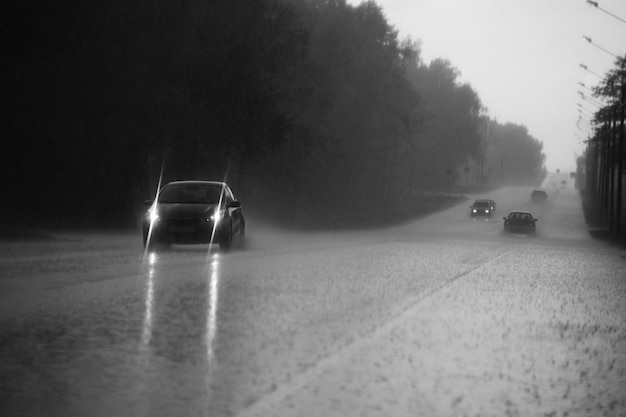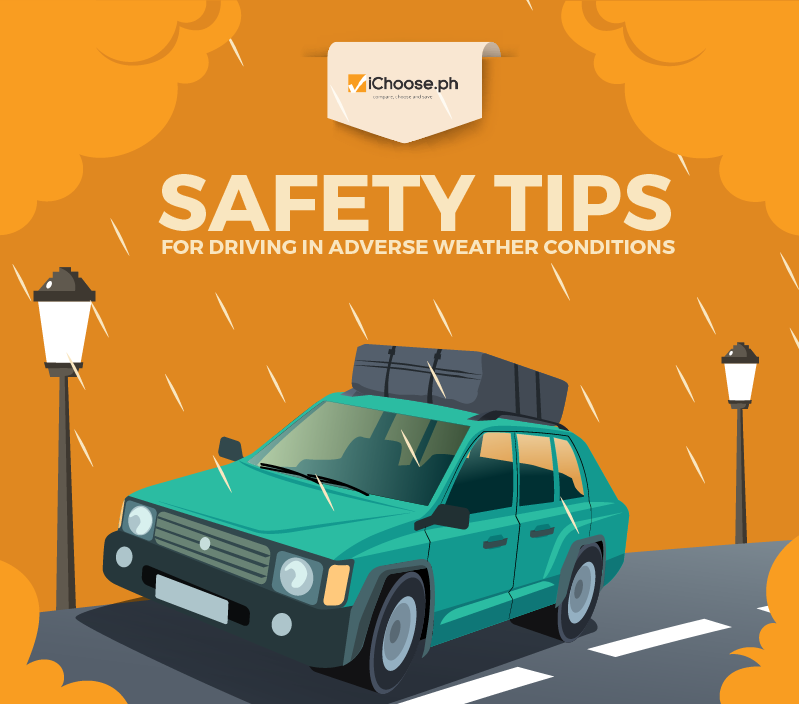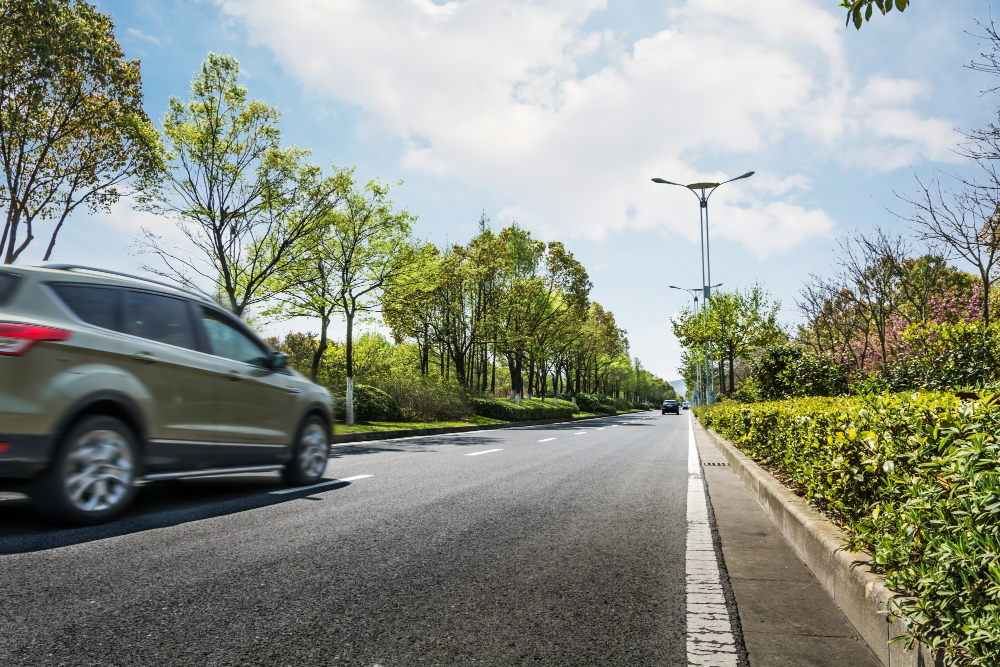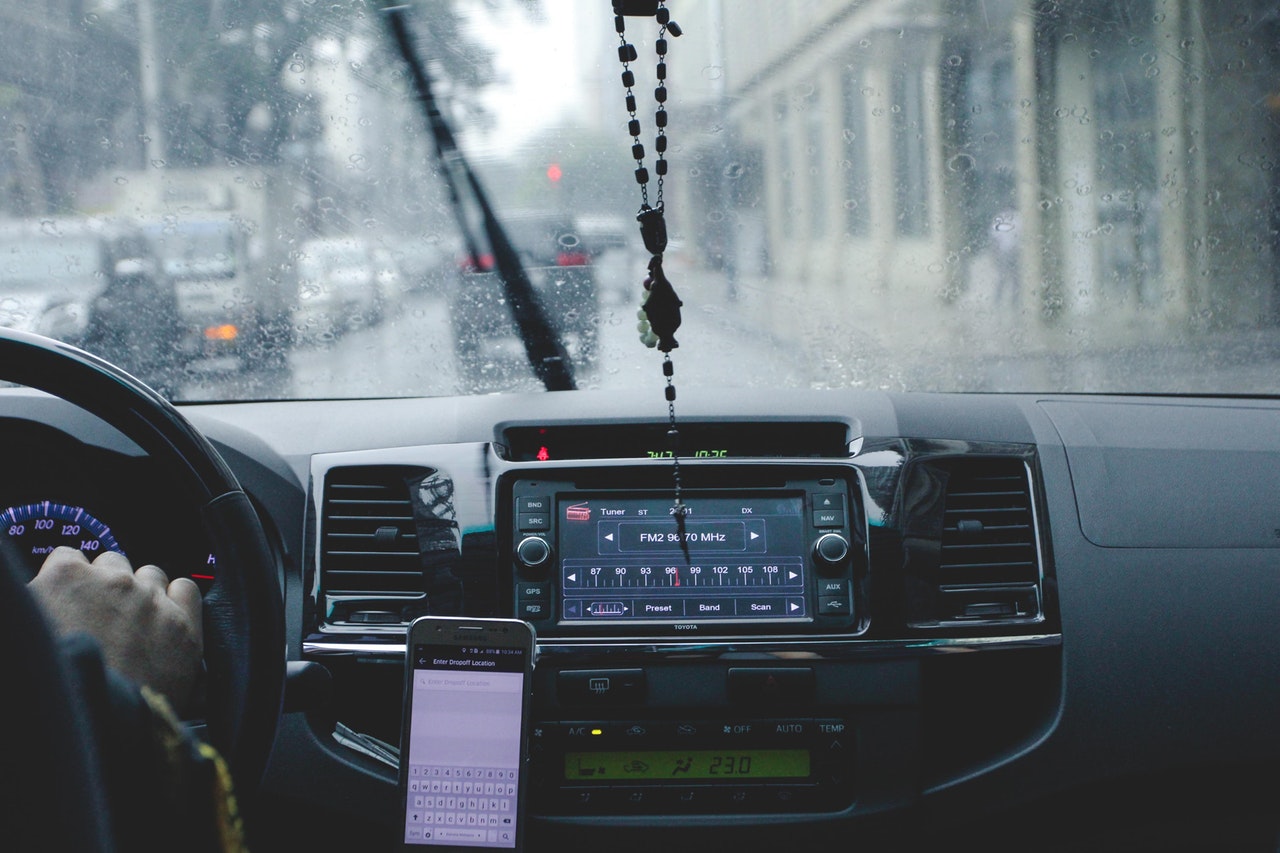Tips for Safe Driving in the Rain
Driving a car may be convenient, but it isn’t always safe. There are several conditions that can make driving as perilous as it can be, and driving in the rain is one of them. Driving in weather conditions such as rains increase the risk and potential for disasters on the road, and can endanger you, your family, and other drivers. This is because a change in weather changes your surroundings, and in effect, the driving conditions you are in.
Keep safe when driving this rainy season with our tips on how you can stay safe even when cruising down the wet road and through a thunderstorm:
- Check Your Car’s Condition Beforehand
Before heading out, always check your car’s conditions, especially the ones that would help you maintain a safe driving condition on the road during rains.
Your wheels should have optimal groove (tread) depth to allow it to better redirect water – tires with smooth surfaces or shallow grooves should be replaced to avoid them endangering you on the slippery and wet road. Your windshield wipers should be effective in getting you some visibility, and your headlights must be bright to help you see through the rain when it gets particularly heavy and visibility has dropped.
- Stay Alert
Brent Praeter of the D&D Driving School and says that “Many people drive subconsciously, out of habit. And when it rains, they often don’t adjust their thinking.” This is one mistake that many drivers make when driving in the rain – assuming that the driving conditions are the same save for a decreased visibility and a more slippery road.
Heavy rains can make the visibility drop dramatically, and that will most certainly hinder your driving. And this not only affects you but your fellow drivers and even the pedestrians themselves. Driving in the rain should be your signal to stay alert because the risks are higher for accidents. Cars around you may experience skidding, particularly deep holes in the ground that may be masqueraded by water as shallow ones, and even the road itself might be hard to see.
Staying alert also helps you gauge your car’s condition, which may be the difference between safely arriving at your destination and a potential hydroplaning incident that will endanger you, your passengers, and your fellow drivers.
- Keep Your Distance
Keeping your distance from other cars ensures that you have a good window of opportunity to react whenever something goes wrong, such as sudden brakes and abrupt changes in road conditions. With a wide gap between you and the car in front, you are able to avoid causing a potential accident not just for you and the other party but also for the general traffic.
Your car should have an additional 1-2 seconds of distance on top of the normal 3 seconds distance that is recommended during normal driving conditions. This gives you and the cars behind you more time to react to traffic with the less-than-ideal conditions you are in. Don’t mind the speed limit so much – they were set for ideal driving conditions, and driving in the rain most certainly isn’t one of them.
- Turn on Your Headlights
Headlights turned on during the rain have the same principle with turning them on in the dark – they help you see a little better and helps other drivers see you as well. With visibilities dropping the heavier the rain gets, you’ll need every bit of help you can get into signaling other drivers that you’re on the road, too.
- Beware of Hydroplaning
Hydroplaning or aquaplaning – the phenomenon when your car tires aren’t gripping the surface of the road but rather a thin layer of water – makes driving perilous. It makes you lose control of your car and can be a scary thing to experience. But knowing what factors play into this risk, how to avoid them, and how to react in case you do find yourself hydroplaning can save you and your passengers’ lives.
The chances of hydroplaning depend on three factors: water presence, speed, and the condition of your tires. To summarize how these three factors play into this potential risk, remember this relationship: the higher the speed and the less your tires can disperse water either because your speed doesn’t allow ample time for them to do their job or because there’s a lack of channels where the water can pass through your car, the greater the risk of hydroplaning when you encounter water on the road.
It’s relatively easy to identify if you’re already hydroplaning. If you feel like your steering has suddenly become very, very light (as if the power steering – if your car is equipped with it – got a sudden boost), chances are, you’re already hydroplaning as your front tires no longer have contact with the road, which removes all resistance to your steering input. It also makes you incredibly nervous – like your subconscious recognizes the incident immediately and is sending you signals. It’s like a sixth sense for danger.
To recover from hydroplaning, first, DO NOT PANIC! Panicking makes you react haphazardly, and one wrong move can cost you a lot when it comes to this incident. Remember that you need to regain control, and that requires you to concentrate.
Second, don’t put any sudden or exaggerated inputs to the tires, either through the steering wheel, the accelerator, or even the brakes. Your first instinct will be to slam down the brakes, but that won’t help. If you’re hydroplaning in a straight line and with no other cars to look out for (the most ideal situation you can have), keep a minimal steering input and minimal pressure on either the brakes or throttle to keep your car stable until your tires regain contact with the road.
If your car starts to drift or slide sideways, keep with the minimal control (no excessive braking, throttling, or steering). Feed a little steering to correct the skid until your car has regained contact with the road and is traveling a straight line again. If the back of the car is sliding right, you’ll need to steer a little bit to the right as well to correct it. If the back is going left, steer left. How much steering you will need will depend on how much angle the car is sliding.
When you’ve regained control of your car, find a safe place to pull over and take time to relax, calm down, and drink water if you need to.
- Avoid Driving Through Flooded Areas
Many parts of the Philippines flood easily when there’s a downpour, and it can get deep pretty quickly. This increases your chances of hydroplaning and can damage your car if the water gets sucked into the air-intake valve and then the engine. Avoid traveling through flooded areas as much as possible – prepare your alternate routes when the forecast calls for heavy rains.
- Drive Slower
Driving in the rain, especially heavy ones, should not be a challenge for you to see how much you can risk it. There are so many things that can go wrong in so little time and the slightest mistake can be costly. If driving in ideal conditions can be dangerous, driving in the rain is even more so. Drive slowly, assess the situation, and you’ll be able to avoid the many perils of driving in this less-than-ideal condition.
More useful reads from iChoose.ph

